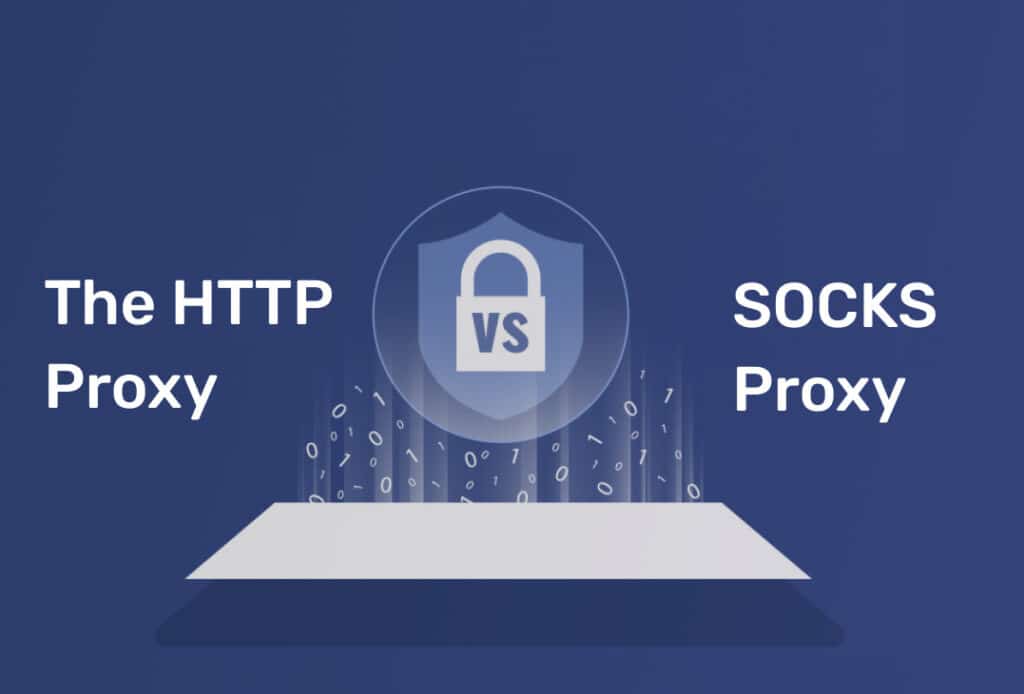HTTP, HTTPS, and SOCKS are all protocols used for communication over networks, but they serve different purposes and operate at different layers of the networking stack:

HTTP (Hypertext Transfer Protocol):
– HTTP is an application layer protocol used for transmitting hypermedia documents, such as HTML files, over the internet.
– It operates on top of the TCP/IP protocol suite and typically uses TCP port 80 for communication.
– HTTP is stateless, meaning each request from a client to a server is independent and does not retain any information from previous requests.
– It is the foundation of data communication for the World Wide Web, enabling web browsers to retrieve and display web pages from web servers.
SOCKS (Socket Secure):
– SOCKS is a networking protocol that operates at the transport layer (Layer 4) of the TCP/IP model.
– It provides a framework for routing network packets between a client and a server through a proxy server.
– SOCKS proxies can handle various types of traffic, including HTTP, HTTPS, FTP, and more, making them versatile for different applications and protocols.
– Unlike HTTP and HTTPS, which are specific to web communication, SOCKS proxies are used for general-purpose proxying and can route traffic for any protocol or application.
– SOCKS proxies can operate in different versions, such as SOCKS4, SOCKS4a, and SOCKS5, each offering different features and capabilities.
In summary, HTTP and HTTPS are application layer protocols used for transmitting hypermedia documents over the web, with HTTPS providing encryption for secure communication. SOCKS, on the other hand, is a transport layer protocol used for general-purpose proxying, allowing clients to route network traffic through a proxy server for various protocols and applications.
SOCKS and HTTP are two different types of proxy protocols, each with its own characteristics and use cases.
Here’s a comparison between SOCKS and HTTP proxies:
1. Protocol Type:
– SOCKS operates at a lower level than HTTP and can handle various types of traffic, including HTTP, HTTPS, FTP, and more. It provides a general-purpose proxying mechanism for TCP and UDP connections.
– HTTP proxies are specifically designed for handling HTTP traffic, which is commonly used for web browsing, accessing websites, and retrieving web content.
2. Supported Protocols:
– SOCKS proxies support a wide range of protocols beyond HTTP, making them more versatile for various applications such as torrenting, online gaming, instant messaging, and accessing non-web services.
– HTTP proxies are optimized for handling HTTP traffic and are primarily used for web browsing, accessing web resources, and interacting with web servers.
3. Level of Transparency:
– SOCKS proxies operate at a lower level and provide a higher level of transparency, as they relay traffic between the client and server without modifying or interpreting the data. This makes them suitable for applications where transparency and versatility are important.
– HTTP proxies intercept and inspect HTTP traffic, allowing them to perform tasks such as caching, content filtering, and access control. However, this can also introduce additional overhead and limitations, particularly for non-HTTP traffic.
4. Authentication:
– SOCKS proxies support various authentication methods, including username/password authentication and IP-based authentication.
– HTTP proxies typically use basic authentication or digest authentication mechanisms to authenticate users before allowing access to proxy services.
5. Performance:
– SOCKS proxies generally offer better performance for non-HTTP traffic since they operate at a lower level and do not interpret or modify the data.
– HTTP proxies may introduce additional latency and overhead, especially when inspecting and filtering HTTP traffic. However, they can also provide performance benefits through caching and content optimization.
In summary, SOCKS proxies are more versatile and suitable for handling various types of traffic beyond HTTP, while HTTP proxies are optimized for handling HTTP traffic and are commonly used for web browsing and accessing web resources. The choice between SOCKS and HTTP proxies depends on the specific use case, requirements, and preferences of the user.
Our proxies have the following available protocols :
- Mobile proxies have both protocols available (HTTP/S and SOCKS5)
- Residential proxies have only HTTP/S